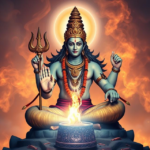India, with its vast diversity of cultures, languages, and religions, stands as a vibrant democracy. But this diversity also makes it vulnerable to internal fault lines—fault lines that, when combined with separatist aspirations and radical ideologies, can manifest as violent terrorism.
From Kashmir’s insurgency and Punjab’s Khalistan movement to Naxalite-Maoist uprisings and religious radicalization, India has been combating various forms of terrorism rooted in identity, ideology, and alienation. These movements, though varied in form and motivation, share a common foundation—separatism and radicalism.
This blog post explores how these two forces act as seeds of terrorism in India, their historical and ideological roots, and the government’s evolving response.
What is Separatism in India?
Separatism in India is the demand by a group—based on ethnic, religious, or linguistic identity—for autonomy or complete secession from the Indian Union. Though India’s Constitution allows for cultural and linguistic autonomy, some groups believe they are politically marginalized, leading to violent struggles.
Major Separatist Movements in India:
Kashmiri Separatism
Khalistan Movement (Punjab)
Northeast Insurgencies (Nagaland, Manipur, Assam)
Naxalite-Maoist Insurgency (Central India)
Understanding Radicalism in the Indian Context
Radicalism is the belief in fundamental, often extreme, political or religious ideologies. In India, radicalism can be:
Religious (e.g., Islamist or Hindutva extremism)
Ideological (e.g., Maoism)
Ethnic or regional (e.g., Tribal identity movements)
When combined with separatism, radicalism becomes a powerful recruitment and mobilization tool that legitimizes violence.
Historical Roots of Separatism and Terrorism in India
1. Partition Legacy
The 1947 Partition created deep-rooted mistrust between communities. The division along religious lines still fuels separatist ideologies—especially in Kashmir and parts of Punjab.
2. Post-Independence Integration Challenges
The integration of over 500 princely states wasn’t smooth. Some regions like Hyderabad and Kashmir posed accession dilemmas, planting seeds of rebellion.
3. Linguistic Reorganization
The 1956 States Reorganization Act satisfied some linguistic demands but failed to address cultural and tribal aspirations in the Northeast.
Case Studies: How Separatism and Radicalism Manifest as Terrorism in India
1. Jammu & Kashmir: The Epicenter of Radical Separatism
Key Facts:
Root cause: Disputed accession to India in 1947
Trigger: Insurgency started in 1989
Support: Cross-border terrorism from Pakistan
Groups Involved: Hizbul Mujahideen, Lashkar-e-Taiba, Jaish-e-Mohammed
The conflict in Kashmir is a textbook example of separatism radicalized by religion and external interference. The valley has seen suicide bombings, targeted killings, and large-scale unrest, especially around sensitive dates and political developments like the abrogation of Article 370 in 2019.
2. Punjab: The Khalistan Movement
Key Facts:
Root cause: Sikh demands for a separate state due to cultural and political grievances
Trigger: Operation Blue Star (1984) and the assassination of Indira Gandhi
Groups Involved: Babbar Khalsa International, Khalistan Commando Force
Although the movement was militarily crushed in the 1990s, its ideological base remains active, especially among the Sikh diaspora in Canada, the UK, and the US. Recent attempts to revive it through online propaganda, social media radicalization, and funding from abroad pose a serious concern.
3. Northeast India: Ethnic Separatism and Militant Nationalism
Key States Affected:
Nagaland: National Socialist Council of Nagaland (NSCN)
Manipur: People’s Liberation Army (PLA)
Assam: United Liberation Front of Asom (ULFA)
These insurgencies are based on ethnic nationalism, often demanding complete independence from India. While peace talks and autonomy have helped reduce violence in many areas, the fragile socio-political environment can reignite unrest.
4. Naxalism: The Ideological War Within
Key Facts:
Root cause: Landlessness, tribal displacement, and state neglect
Affected Areas: Jharkhand, Chhattisgarh, Odisha, Maharashtra, West Bengal
Groups Involved: CPI (Maoist)
Naxalism is India’s longest-running internal conflict, often referred to as the “Red Corridor” problem. It’s driven by radical leftist ideology that seeks to overthrow the democratic state through armed revolution.
The Role of External Forces
India’s internal terrorism has often been fuelled by foreign support:
Pakistan’s ISI has supported insurgents in Kashmir and Punjab.
China has been suspected of providing indirect aid to Northeast insurgents.
Diaspora funding plays a role in sustaining ideologies like Khalistan.
Digital Radicalization: The New Age Threat
In the 21st century, terrorism in India is no longer confined to forests or borderlands. With the proliferation of smartphones and social media, radical ideologies reach even urban youth.
Digital Strategies Used by Radical Groups:
Fake news and hate propaganda
Encrypted messaging for recruitment
YouTube and Telegram for indoctrination
Online fundraising via cryptocurrency
Impact of Terrorism on India
Terrorism rooted in separatism and radicalism has:
Claimed thousands of civilian and military lives
Hindered tourism and investment in affected regions
Polarized society along religious or ethnic lines
Burdened India’s economy with high security costs
Government Response to Terrorism
1. Military and Security Operations
Surgical strikes in response to cross-border terrorism
Operation Green Hunt against Naxals
Intensified patrolling in border states
2. Political and Legal Measures
Revocation of Article 370 in J&K
Armed Forces Special Powers Act (AFSPA) in disturbed areas
Unlawful Activities Prevention Act (UAPA) for arresting suspects
3. Counter-Radicalization and Development
Educational reforms in madrassas
Skill development in tribal areas
Peace talks with willing insurgent groups
Challenges Ahead
Despite efforts, terrorism persists due to:
Slow justice systems
Human rights abuses by security forces causing resentment
Political appeasement and lack of unified national policy
International support for separatist narratives
How to Prevent the Growth of Separatism and Radicalism
1. Inclusive Governance
Empower marginalized communities by ensuring representation, autonomy, and dignity.
2. Education and Employment
Investment in education, healthcare, and job creation can divert youth from extremism.
3. Digital Literacy
Train people to recognize and resist online radicalization and propaganda.
4. Promote National Identity with Diversity
Strengthen India’s unity by celebrating diversity, not suppressing it.
Conclusion
The seeds of India’s terrorism lie deep in the soil of historical grievances, socio-economic neglect, and ideological manipulation. Separatism and radicalism are not just national security threats—they are symptoms of a divided society.
To defeat terrorism, India must go beyond military victories. It must win the battle of ideas, the trust of its people, and the hope of its youth.
FAQ
Q1: Is separatism in India always violent?
A: No. Some separatist movements are non-violent and political in nature. However, when ignored or suppressed, they can become violent.
Q2: What are the main regions affected by terrorism in India?
A: Jammu & Kashmir, parts of Punjab, the Northeast (Nagaland, Manipur, Assam), and the Red Corridor states affected by Naxalism.
Q3: What is India doing to counter radicalism?
A: India uses a combination of military force, legal action, and developmental programs to counter radicalism and terrorism.
Q4: How can youth be protected from radicalization?
A: Through education, social awareness, digital literacy, and engagement in constructive civic initiatives.
Related posts:
 Breaking the Cycle: Combating Terrorism at Its Ideological Roots
Breaking the Cycle: Combating Terrorism at Its Ideological Roots
 Teaching Kids Cybersecurity in the Digital Age: Essential Tips for Parents
Teaching Kids Cybersecurity in the Digital Age: Essential Tips for Parents
 Self-Discovery 101: How to Unlock Your True Potential
Self-Discovery 101: How to Unlock Your True Potential
 Unlocking the Secrets of Sleep: How Sleep Physiology Shapes Brain Function
Unlocking the Secrets of Sleep: How Sleep Physiology Shapes Brain Function
 Mahashivratri: A Festival of Spiritual Awakening
Mahashivratri: A Festival of Spiritual Awakening
 New COVID-19 Variant 2025: Symptoms, Spread, and Safety Measures You Must Know
New COVID-19 Variant 2025: Symptoms, Spread, and Safety Measures You Must Know
